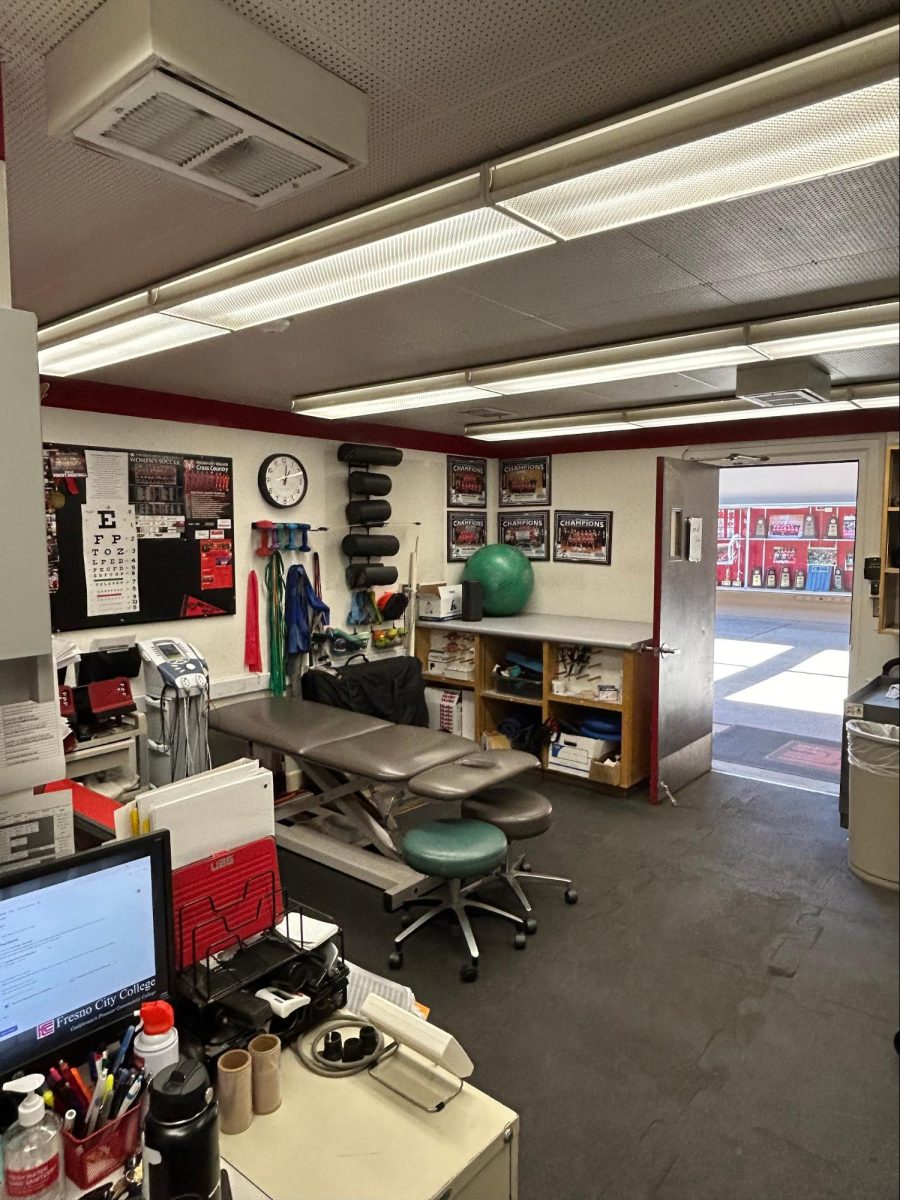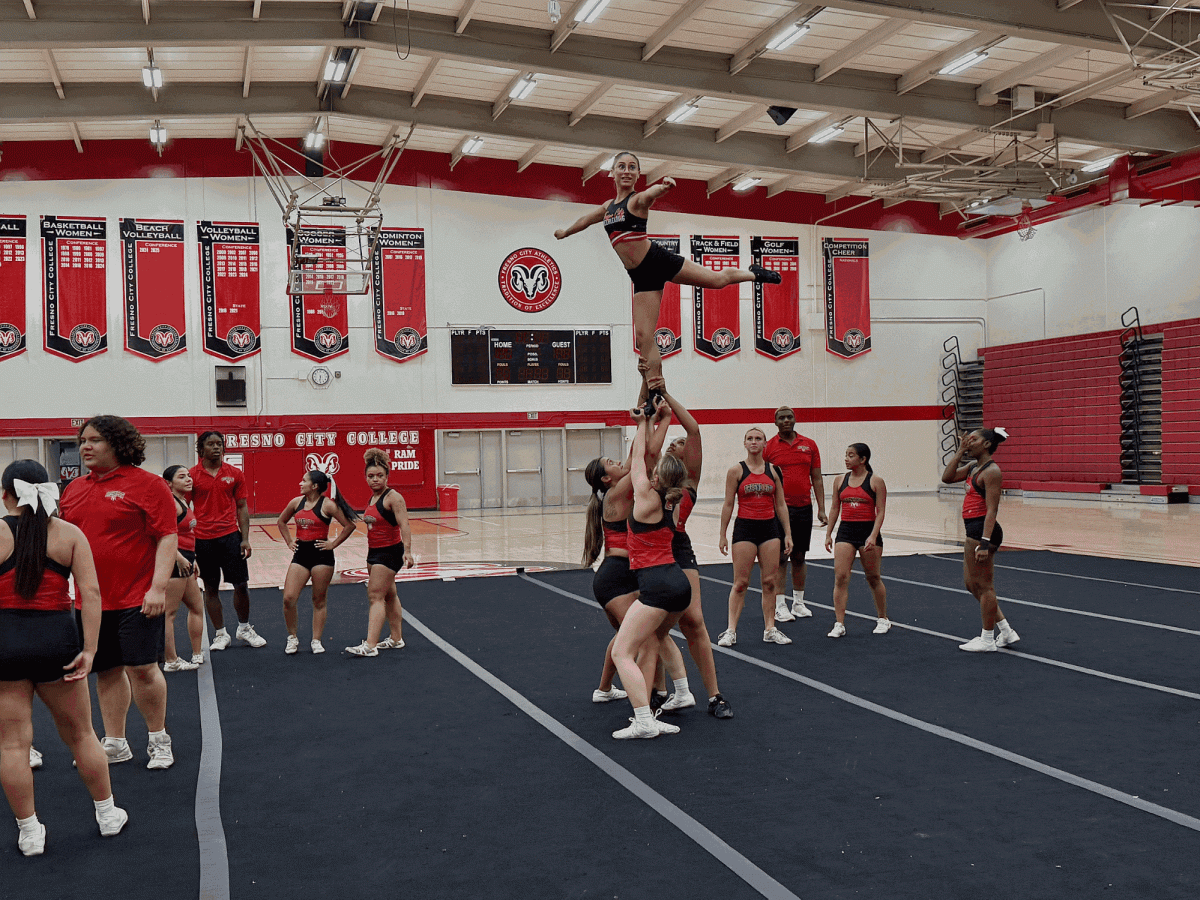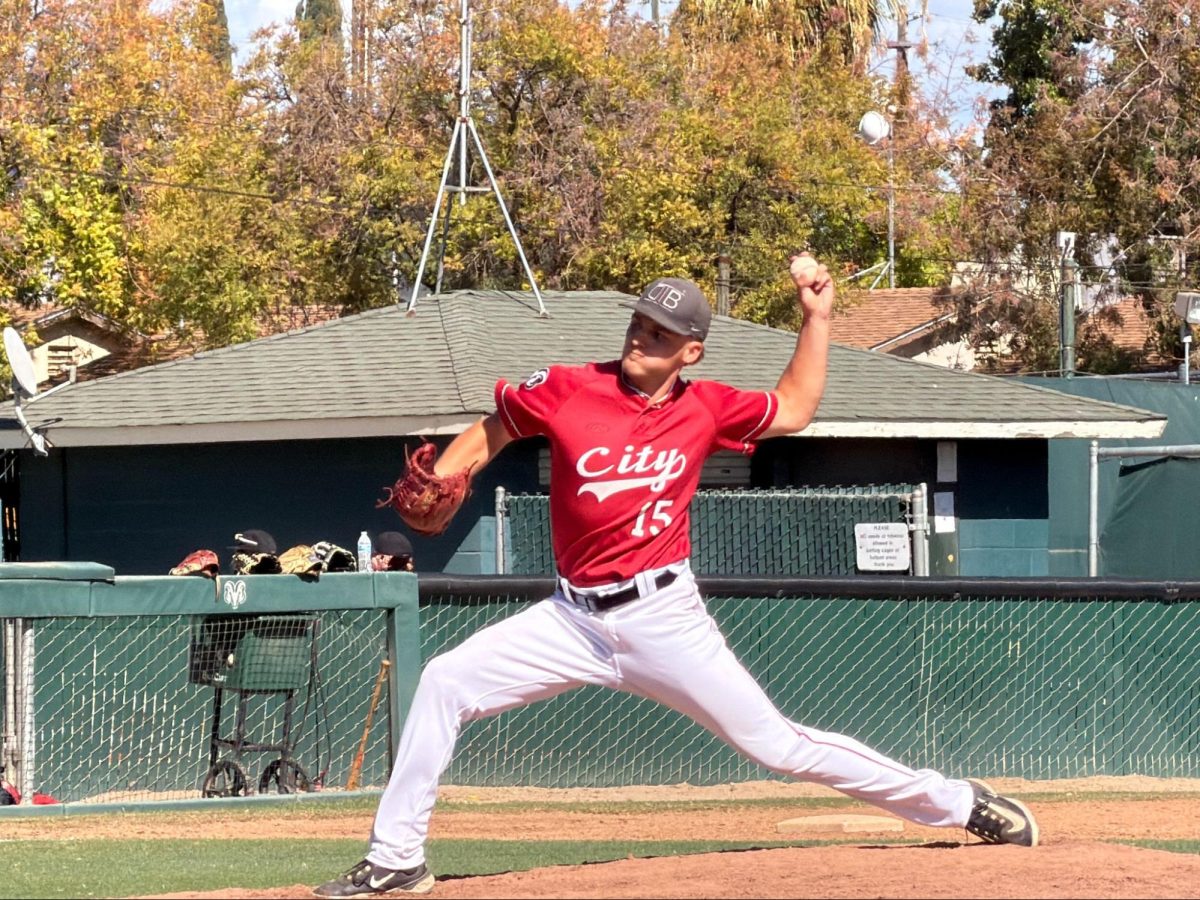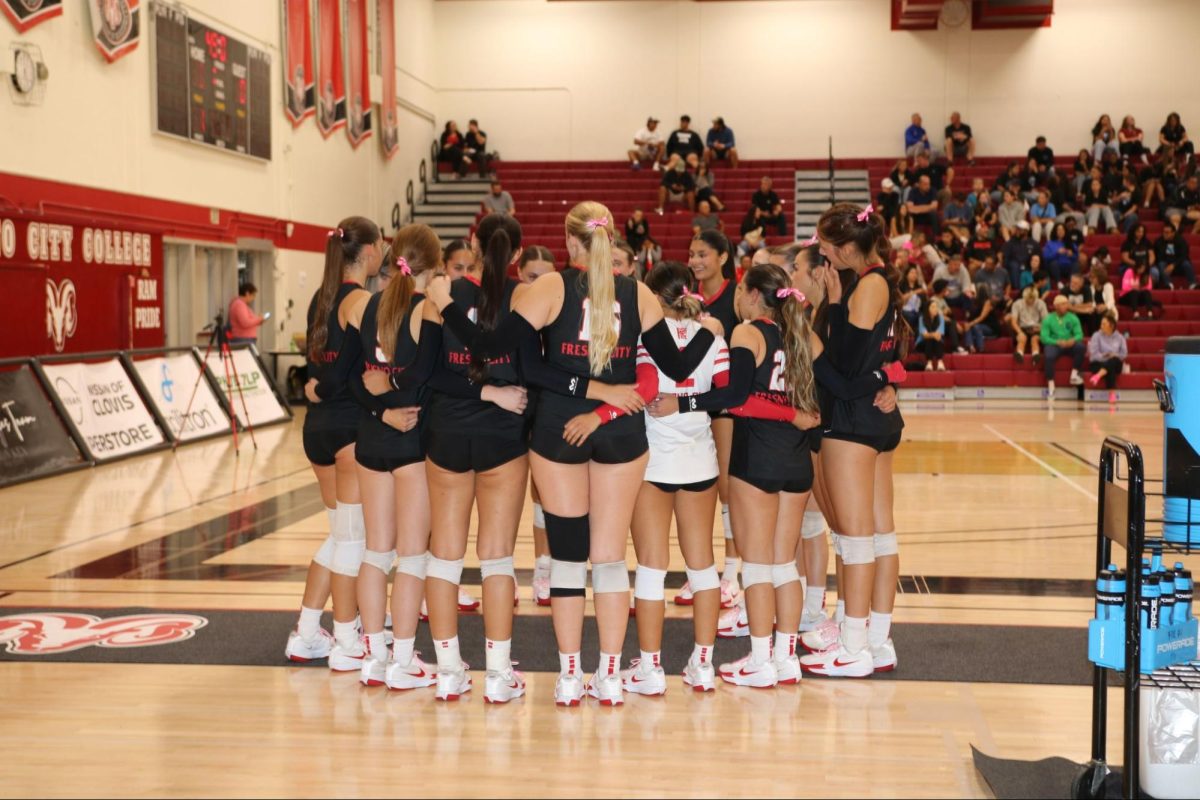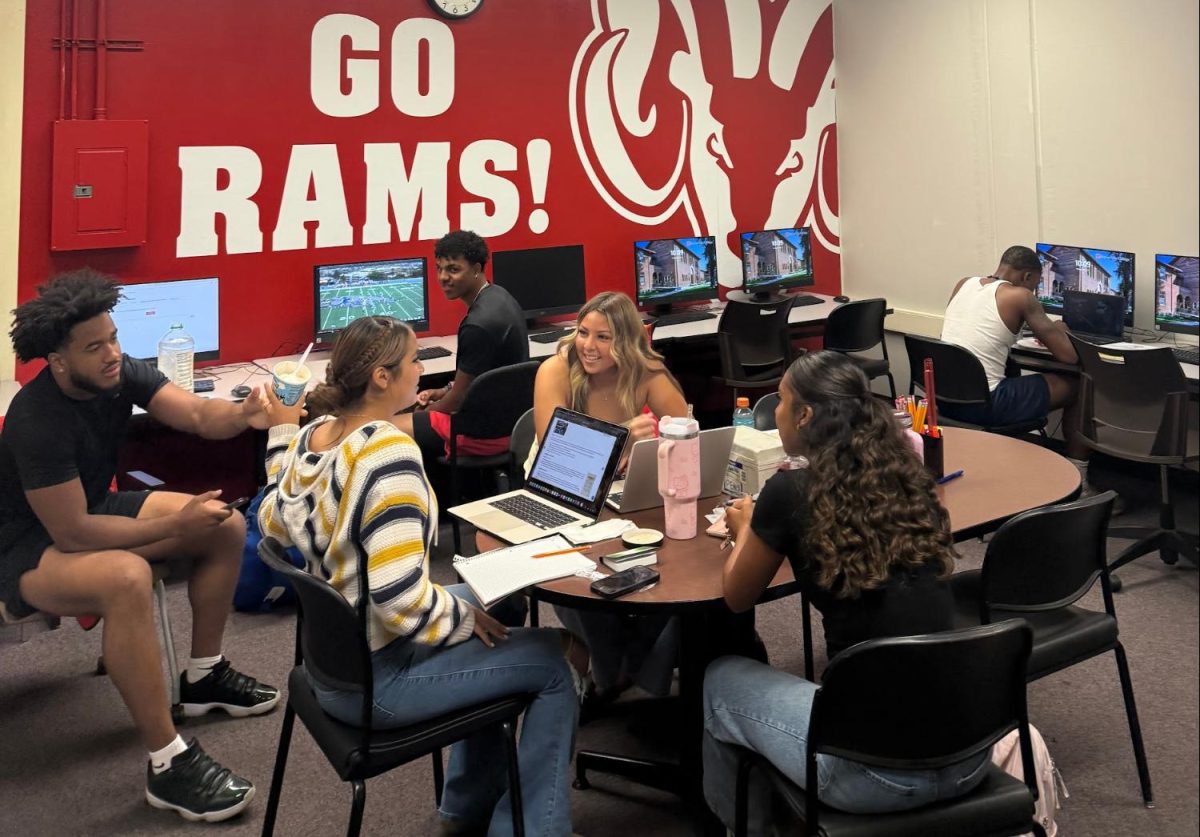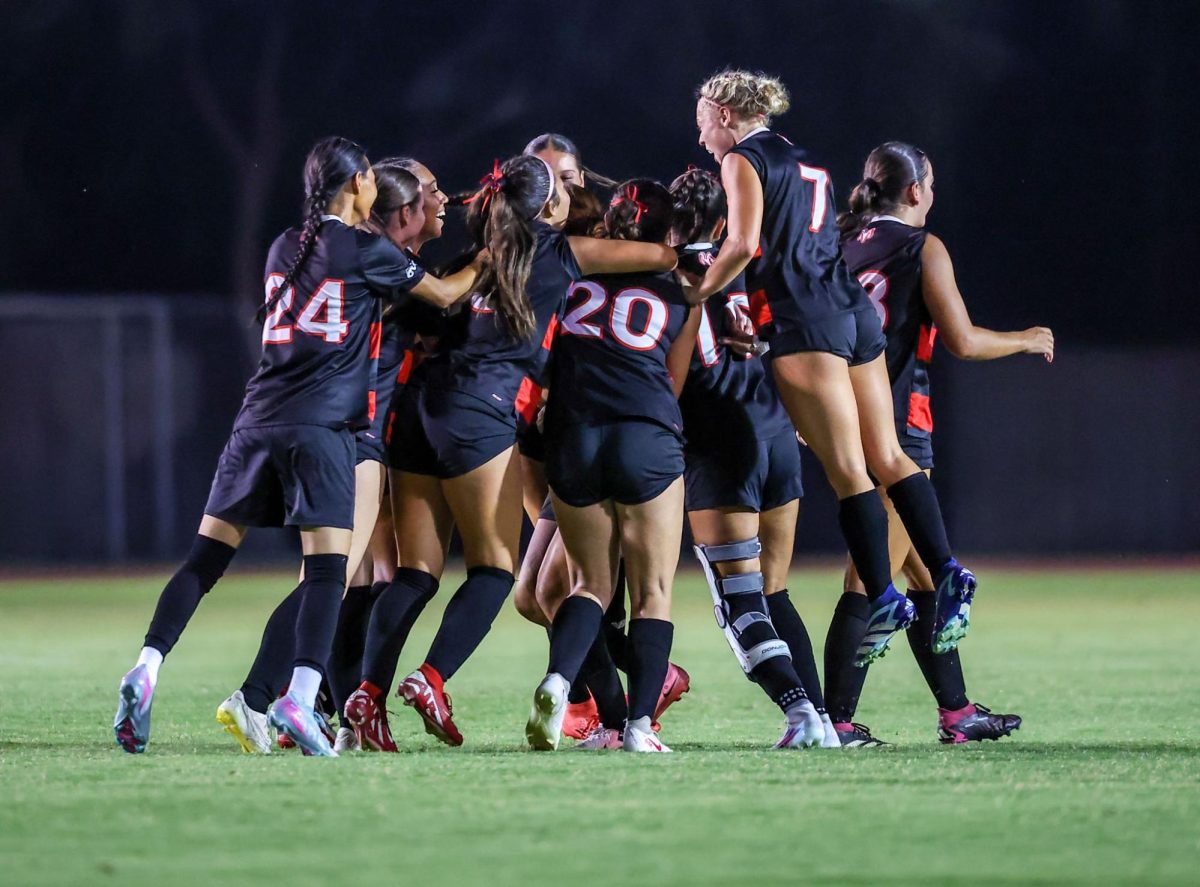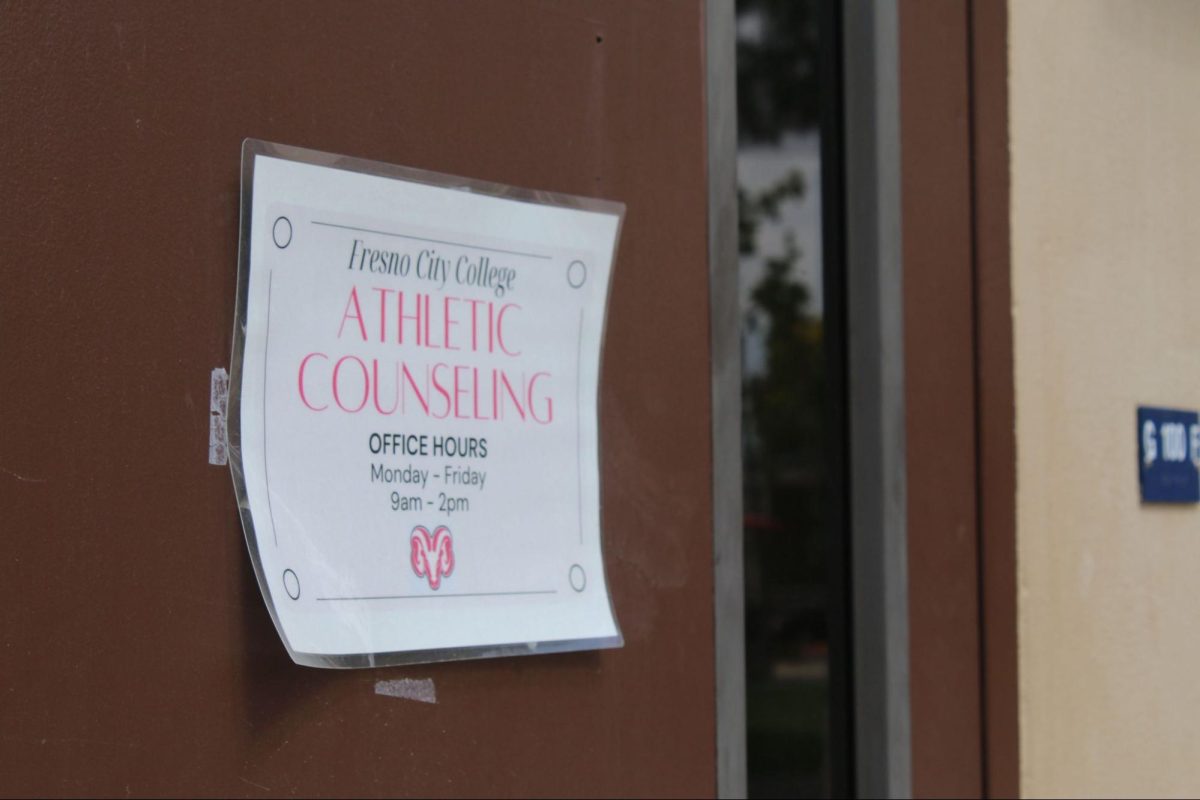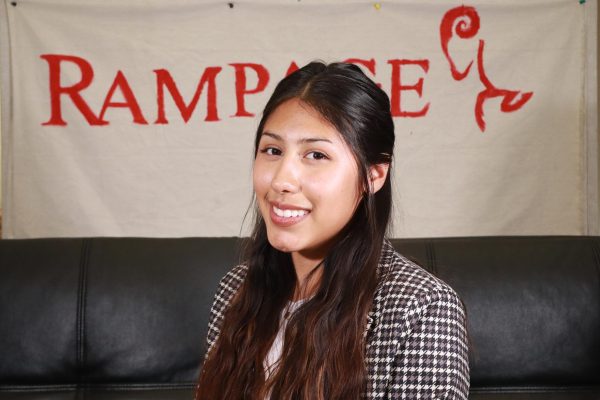In the competitive world of college athletics, student-athletes dedicate countless hours to stay in peak condition, they rely heavily on the underdogs at Fresno City College: our athletic trainers.
With working in overcrowded spaces with limited facilities, these athletic trainers are crucial in keeping our athletes healthy and ready to compete.
FCC currently has three full time certified athletic trainers for 23 competitive sports.
During the fall season, the demand for athletic training services reaches its peak at the Ratcliffe training facility and the on-campus training room.
Francisco Gamboa, the athletic trainer on main campus, explains how there is “roughly 64.9% of athletes seek treatment during this time”, while caring for 13 out of the college’s 23 sports.
Once school is in full swing, the number of athletes coming in triples in digits, according to David Holford, another FCC athletic trainer at the Ratcliffe training facility.
“In the fall, we see around 120 to 150 athletes on our busiest days between the three of us. In the spring, it’s more like 50 to 75 a day, so basically we have all 600 or so student athletes that we have to know,” Holford said.
Holford points out the challenge of keeping track of everyone, especially the athletes that don’t always report their injuries quickly or accurately.
“Going from one student-athlete to the next while trying to remember each person’s progress takes a lot of brainpower,” Holford said. He notes that there are “about 500 to 600 student-athletes each year, and that number goes up when spring sports start.”
Hudson Swaim, a basketball student athlete, goes to the main campus athletic training facility every day before and after practice shares his frustrations about the crowded space.
“There can be up to 12 people in this room doing rehab, and there are only two tables and one for taping, we have people stepping over people,” Swaim said.
Isabella Aguirre, a soccer player recovering from ACL surgery, has her own opinions about the Ratcliffe Stadium training facility.
“It gets really crowded with so many sports going on at the same time. All the tables are always in use, and the floor is packed. When you’re injured, you’re trying to squeeze through tight spaces, and it’s tough to even get around,” Aguirre said.
Aguirre acknowledged her physical and mental struggles after her surgery, but she claimed that she always felt secure in the company of her sports trainer, Emily Rand.
“I had to step back and realize that I can’t do certain things. Emily helps me a lot. She’s really patient and she really helps me get through it,” Aguirre said.
Derrick Johnson, the Associate Dean of Athletics, weighed in on the situation, explaining the limitations faced by FCC athletic trainers.
“They’re hourly employees and can only work a certain number of hours each week. That sometimes means they can’t provide the level of care you’d find in larger programs,” Johnson said.
FCC athletic trainers work individually an average between 60 and 80 hours a week according to Johnson.
“I haven’t seen an athletic trainer here work just 40 hours a week,” Johnson said.
The average workload for an athletic trainer starts with student athletes doing warm ups while athletic trainers prepare the facility and waters for practice and begin their hands-on treatments and rehabilitation adjustments for the student athletes.
While juggling the many responsibilities of their individual positions, they also mentor athletic training students studying to be athletic trainers.
Holdford expresses how lucky they are to have a solid squad of student athletic trainers that is willing to help with everything they do even though they can only do what they were taught to do.
Aguirre points out the benefits of being taken care of by FCC athletic trainers.
“If I were to go with my own doctor, it’d take a month to get an MRI and another month to get treated. Here, you see a doctor today, have an MRI later in the week, and receive treatment the next day,” Aguirre said.
Johnson believes that FCC needs more athletic trainers than they currently have at the moment.
“I think they do the best they can with the resources available. Ideally, for every six sports, you should have two to three athletic trainers. We have 23 sports and just three athletic trainers—that’s a lot to handle,” Johnson said.

